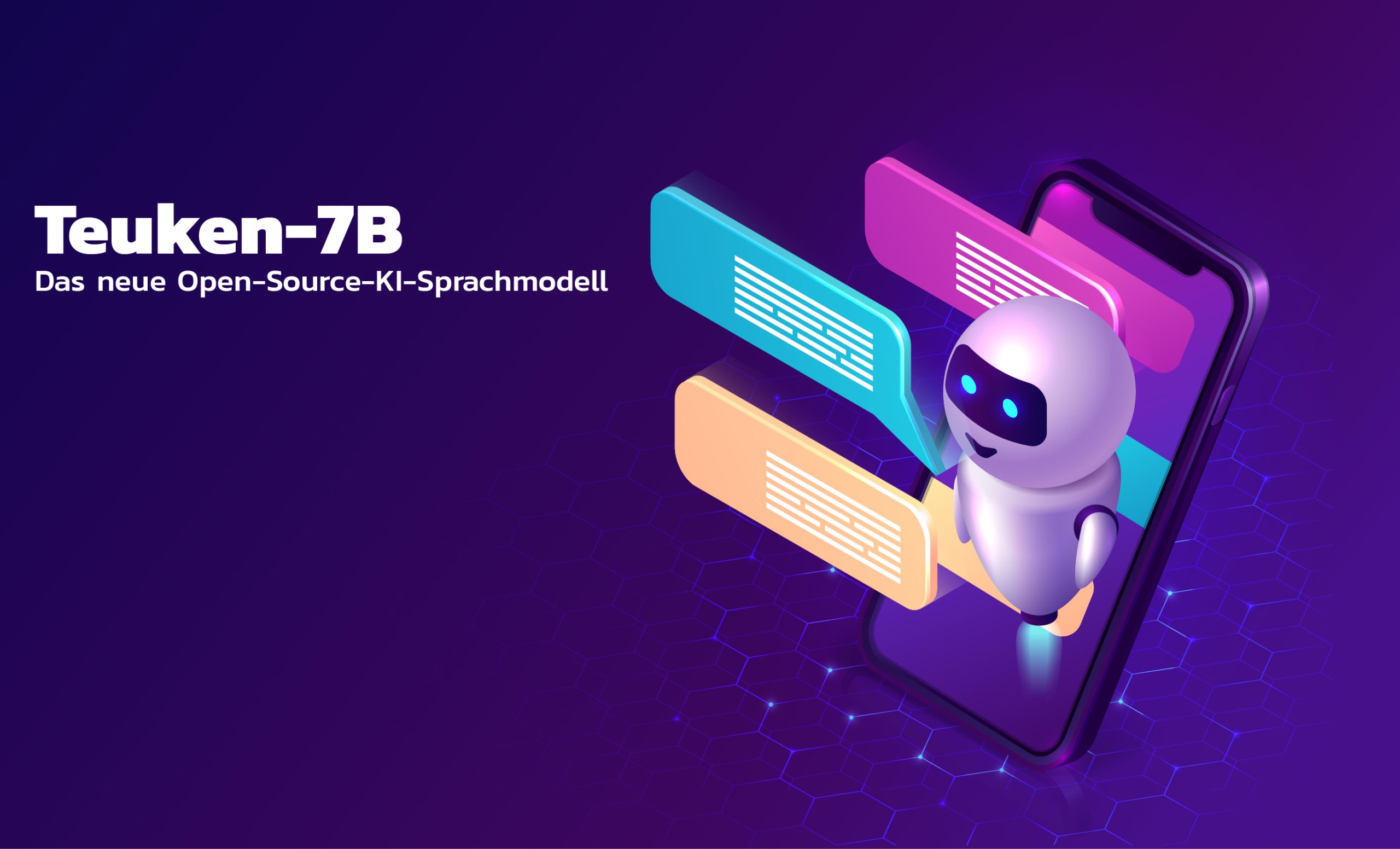Artificial intelligence is currently a ubiquitous topic. Whether ChatGPT, Llama, or Claude – the most well-known models almost exclusively originate from the USA. It is no surprise that Europe often appears to be lagging. However, this is no longer entirely true: With Teuken-7B, the new open-source AI language model, Europe aims to demonstrate that it can not only participate but also shape technological developments. 🎯
Imagine this: A language model that is not only powerful but also covers the linguistic diversity of Europe, meets data protection standards, and can be freely used by companies and researchers. This is precisely what makes Teuken-7B so exciting! It was developed as part of the OpenGPT-X project, which marks a true milestone for the European AI landscape.
But what exactly is Teuken-7B, and why is it so important for Europe? Let us delve deeper into the details! 🚀
What makes Teuken-7B special?
Teuken-7B was specifically developed to offer an alternative for science and businesses that value transparency, data protection, and individual adaptability. It is based on an open-source approach, meaning: The code and the model can be freely used by researchers and companies and adapted for commercial projects.
With seven billion parameters, Teuken-7B is smaller than US giants like GPT-4, which is estimated to have around 200 billion parameters, but it demonstrates an impressive range of languages and application areas.
Ten Partners are Involved
The OpenGPT-X project is led by the two Fraunhofer Institutes for Intelligent Analysis and Information Systems (IAIS) and for Integrated Circuits (IIS). Furthermore, TU Dresden, Forschungszentrum Jülich, and companies such as Aleph Alpha and IONOS SE are involved – a total of ten partners. Together, they are working to develop a powerful and adaptable AI model that complies with European standards and can be freely used worldwide.
“Our model has demonstrated its performance across a wide range of languages, and we hope that as many as possible will adapt or further develop the model for their own work and applications. In this way, we aim to contribute both within the scientific community and in collaboration with companies from various sectors to address the growing demand for transparent and individually customizable generative artificial intelligence solutions,” says Stefan Wrobel, Institute Director at Fraunhofer IAIS.
Why is Teuken-7B a Milestone for Europe?
Until now, almost all relevant AI language models in the Western world have originated from the USA. Models such as GPT-4, Claude, or Llama are powerful in their performance, but they raise questions regarding data protection, transparency, and European dependence. Teuken-7B offers a European solution that:
– Is open-source and freely available.
– Can be used in commercial projects.
– Remains adaptable and transparent, which is advantageous for individual applications.
– Meets data protection standards that are specifically tailored to the European market.
What Does This Mean for Businesses and Science?
The model is intended to contribute both within the scientific community and in collaboration with companies from various sectors. The goal is to meet the growing demand for adaptable and transparent solutions in generative AI.
With Teuken-7B, companies can, for example, develop chatbots, translation systems, or data analyses without having to rely on the large US platforms. This not only strengthens European independence but also provides a flexible basis for innovative AI projects.
Conclusion: Europe’s Path to an AI Future
Teuken-7B is more than just another language model – it is a statement for digital sovereignty and innovation in Europe. The project demonstrates that Europe is ready to forge its own path and develop technologies that can compete with the major players.
The question remains: Will Teuken-7B fundamentally change the AI landscape? One thing is certain – the path forward is promising and full of potential. 🚀

